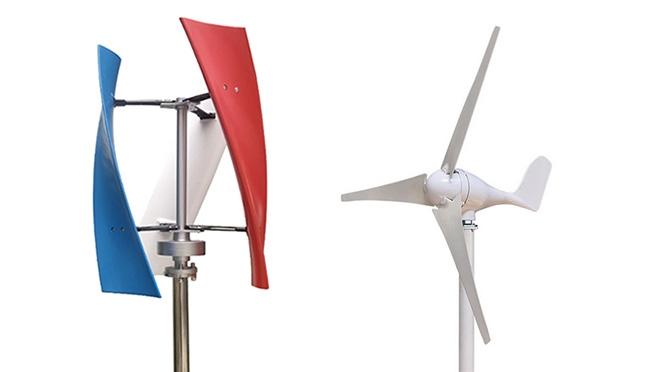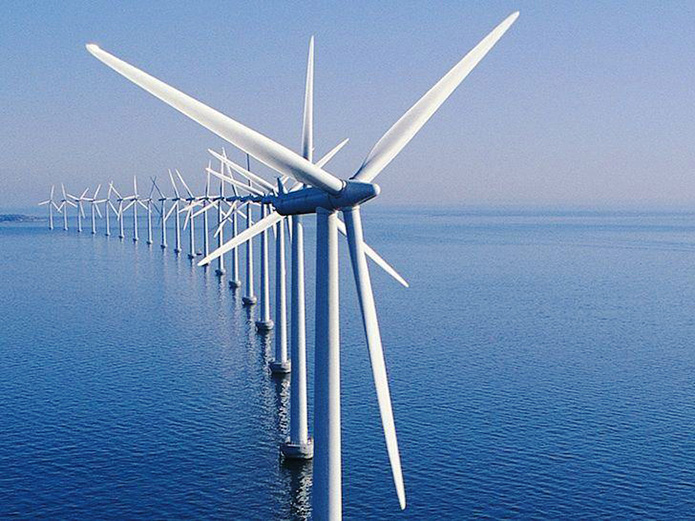As the global emphasis on renewable energy intensifies, wind power, a clean and renewable energy source, is steadily gaining a significant position within the global energy mix. Wind turbines, as the core equipment of wind power generation, have their performance and efficiency directly impacting the overall effectiveness of the wind power system. This blog delves into the working principles of wind turbines, their relationship with wind direction, and the effects of land-sea winds on their operation, providing a reference for researchers and professionals in the field.
Working Principle of Wind Turbines
A wind turbine is a device that converts wind energy into mechanical energy, and subsequently into electrical energy. It mainly consists of a wind rotor, generator, transmission system, yaw system, and control system. The wind rotor comprises multiple blades, which capture wind energy and drive the rotor to rotate. The rotational mechanical energy is transmitted to the generator through the transmission system (such as a gearbox or direct drive system), which converts it into electrical energy.
The design of the turbine blades is critical, typically using lightweight, high-strength materials. The asymmetric cross-sectional shape of the blades helps create lift by utilizing Bernoulli's principle, thereby driving the rotor’s rotation. Additionally, wind turbines are equipped with pitch systems and yaw systems, which adjust the blade pitch and ensure the rotor faces the wind, maximizing power generation efficiency.
Inverter.com currently has both horizontal axis wind turbines and vertical axis wind turbines for sale.

Relationship Between Wind Turbines and Wind Direction
Wind direction significantly affects the efficiency of wind turbines. Due to the random and unstable nature of wind, changes in wind direction directly impact the wind rotor's exposure to wind and its speed, thereby affecting the power output. Wind turbines must have robust wind-tracking capabilities to ensure the rotor is always aligned with the wind to capture the maximum amount of wind energy.
1. Wind Tracking Systems: The wind turbine's wind-tracking system includes the yaw and pitch systems. The yaw system, driven by gears and working with the control system, ensures that the rotor is always facing the wind. The pitch system adjusts the angle of the blades to optimize wind energy absorption under different wind speeds. When wind speeds exceed the cut-out speed, the pitch system also adjusts the blades to reduce wind load and protect the turbine from damage.
2. Effect of Wind Direction on Power Generation Efficiency: Changes in wind direction directly affect the area of the rotor exposed to the wind and the wind speed. When the wind direction is perpendicular to the rotor's axis, the rotor's wind exposure is maximized, and wind speed is at its highest, leading to peak power generation efficiency. However, since wind direction constantly shifts, wind turbines need strong wind-tracking abilities to quickly respond to these changes and maintain alignment with the wind. Furthermore, sudden changes in wind direction can alter the load distribution and increase mechanical stress on the turbine, potentially causing damage or fatigue failure in the mechanical components. Thus, wind direction changes must be carefully considered in turbine design, along with preventive measures to mitigate their impact on mechanical stress.
The Effect of Land-Sea Winds on Wind Turbines
Land-sea wind is a periodic phenomenon in coastal areas, closely related to the distribution of land and sea and diurnal temperature differences. This wind variation significantly affects wind turbine operations in several ways:
1. Mechanism of Land-Sea Wind Formation
During the day, the air over land heats up faster than over the sea, causing cooler, denser air from the sea to move inland, resulting in sea breezes. At night, the opposite occurs, forming land breezes. This alternating flow of air creates a vertical circulation pattern between land and sea.
2. Impact of Land-Sea Winds on Wind Turbines
- Wind Speed Variations: Land-sea wind causes significant variations in wind speed, particularly during the transition between day and night. Sea breezes tend to be stronger and faster, increasing wind turbine efficiency during the day. Conversely, weaker land breezes at night may reduce power generation. Thus, coastal wind farm layouts must account for these wind speed variations to optimize turbine placement and operation strategies.
- Wind Direction Changes: Land-sea wind also exhibits cyclical changes in wind direction, with sea breezes blowing inland during the day and land breezes moving seaward at night. Wind turbines must have excellent wind-tracking capabilities to quickly respond to these changes and adjust rotor direction accordingly. Wind direction fluctuations can also lead to variable rotor loads and increased mechanical stress, demanding higher stability and reliability from wind turbines.
- Turbulence Effects: The process of land-sea wind formation generates turbulence, particularly in the complex wind fields near coastlines. Turbulence increases load fluctuations and mechanical stress on wind turbines, reducing efficiency and reliability. Therefore, turbulence effects must be carefully considered in turbine design, with measures taken to mitigate vibration and enhance durability.

3. Response Strategies
To fully harness land-sea wind resources and improve the efficiency of wind turbines, the following strategies can be implemented:
Optimize wind turbine layout: Arrange wind turbine clusters based on the wind direction and wind speed characteristics of land-sea winds to minimize turbulence interference and wake effects.
Enhance wind-tracking capabilities: Utilize advanced yaw and pitch control technologies to improve the accuracy and speed of wind-tracking, ensuring that the rotor remains consistently aligned with the wind direction.
Strengthen operation and maintenance management: Regularly maintain and inspect wind turbines to identify and address potential issues promptly, ensuring stable operation and efficient power generation.
Implement smart control technology: Leverage artificial intelligence, big data, and IoT technologies for smart control, fault diagnostics, and predictive maintenance of wind turbines, thereby increasing power generation efficiency and reliability.
Conclusion
As the core equipment in wind power systems, the performance and efficiency of wind turbines are directly linked to the power generation capacity and economic viability of the system. Wind direction and land-sea winds play critical roles in turbine operation and must be thoroughly addressed. By studying the working principles of wind turbines, their relationship with wind direction, and the effects of land-sea winds, and by implementing effective strategies and technologies, wind energy resources can be maximized, improving the efficiency and reliability of wind power generation. As technology continues to advance and policy support remains strong, Inverter.com believes that wind power is poised to play an increasingly important role in the global energy landscape.
